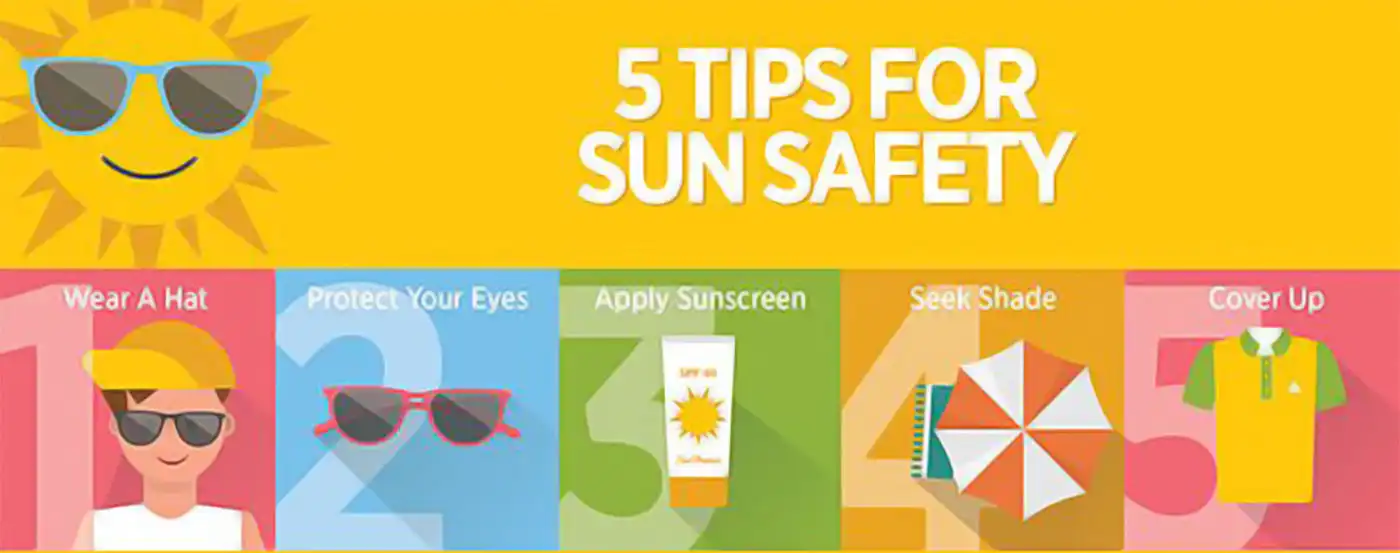Cancer Prevention
Cancer prevention is taking actions to lower your risk of getting cancer. The choices you make about diet, exercise, and other habits can affect your overall health and your risk for developing cancer and other serious diseases.
It’s important to follow recommendations for cancer screening tests. Screening tests are used to find cancer in people who have no symptoms. Regular screening gives you the best chance of finding cancer early when it’s small and before it has spread.

Skin Cancer Awareness & Sun Safety Tips:
Skin cancer — the abnormal growth of skin cells — most often develops on skin exposed to the sun. But this common form of cancer can also occur on areas of your skin not ordinarily exposed to sunlight.
There are three major types of skin cancer — basal cell carcinoma, squamous cell carcinoma and melanoma.
You can reduce your risk of skin cancer by limiting or avoiding exposure to ultraviolet (UV) radiation. Checking your skin for suspicious changes can help detect skin cancer at its earliest stages. Early detection of skin cancer gives you the greatest chance for successful skin cancer treatment.
Try NOT to Burn
Sunburns significantly increase one's lifetime risk of developing skin cancer, especially for children.
Wear Sunscreen
Apply sunscreen to all exposed skin 15 minutes before going outside. Sunscreen should have a Sun Protection Factor (SPF) of at least 30 and provide broad-spectrum protection from both ultraviolet A (UVA) and ultraviolet B (UVB) rays. Reapply every two hours, and after swimming or sweating.
Wear Protective Clothing
Wear protective clothing, such as a long-sleeved shirt, pants, a wide-brimmed hat, and sunglasses.
Seek Shade
Seek shade when possible, and remember that the sun’s UV rays are strongest between 10 a.m. and 4 p.m.
Check the UV Index
UV Index provides important information to help you plan your outdoor activities and how to prevent sun overexposure. The UV Index forecast is issued daily by the EPA.
Avoid Sun Tanning and Tanning Beds
UV radiation from tanning beds and the sun causes skin cancer and wrinkling.
Remember to practice Sun Safety all year!
HPV (Human Papillomavirus) Awareness & Prevention:

HPV infections are so common that nearly all men and women will get HPV at some point in their lives. Nearly 80 million Americans are currently infected with HPV. About 14 million Americans, including teens, become infected each year.
HPV is spread through intimate skin-to-skin contact. You can get HPV by having vaginal, anal, or oral sex with someone who has the virus.
- cervix, vagina, and vulva in women
- penis in men
- anus and back of the throat, including the base of the tongue and tonsils (oropharynx), in both women and men
Every year in the United States, HPV is estimated to cause nearly 36,000 cases of cancer in men and women.
Prevent cancer with the HPV vaccine! The CDC recommends children get two doses of HPV vaccine at ages 11–12 years. The HPV vaccination can be started at age 9 years. For HPV vaccine to be most effective, the series should be given before children are ever exposed to the virus.
Children who get the first dose before their 15th birthday only need two doses. Children who get the first dose on or after their 15th birthday need three doses.


